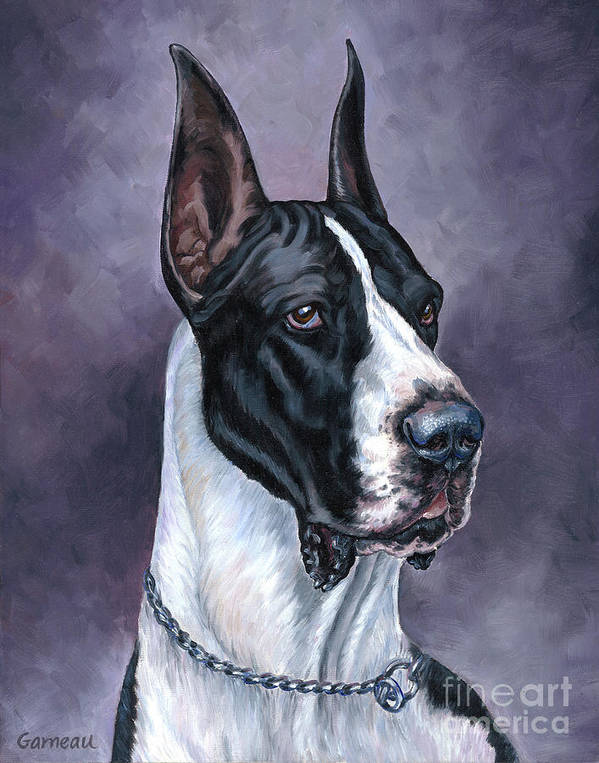
If you’re a new fancier or just getting into dogs, you haven’t been around long enough to know that some of the breeds around you (or some aspect of them) haven’t always called by the names you know them.
Veterans will remember a time when the Mantle Great Dane was known by that name for only a couple of decades.
First, however, let’s review. According to its AKC breed standard, there are seven officially recognized colors in the breed: Black, Blue, Fawn, Brindle, Harlequin, Merle, and the subject of this post – Mantle.
The mantle, according to the wonderful site on genetics, http://doggenetics.co.uk, is essentially a black or merle Great Dane with Irish spotting, and it can appear in different configurations. Harlequin breedings (black and white) may produce mantles, and to our knowledge, mantles can be bred to Harlequins without the risk of producing white puppies. Interestingly, a Mantle bred to Mantle cannot produce a Harlequin.
The pattern is called a mantle because it resembles a robe-like piece of clothing that is left open in the front and may be sleeveless, but before 1998, these dogs were called Boston Great Danes because of the similar black and white pattern seen in a Boston Terrier. Some sources called it the “Boston Effect.”
In the revised standard of 2009, the United Kennel Club still referred to the coat pattern as the “Boston.” In the revised standard of January 1, 2019, “Boston” was gone and replaced with “Mantle.” Some registries, like the Canadian Kennel Club, use both terms in the standard, and some, like the AKC, the UK’s Kennel Club, and Dogs Australia, don’t mention the word, “Boston” at all. If anyone knows the history behind the name change, please contact us privately so we might include it here.
Image: “Justice” by Catherine Garneau is available as fine art, and in home decor and lifestyle items here.

Interesting. One thing: I hope that ears and tale will never be cut, no mater the breed. Dogs need them.
There are practical reasons to dock a tail, and in the United States, it is legal. Thank you for sharing your thoughts, however!
The Great Dane was originally a boar hunter! Wild boar have tusks, which they could use to rip the dog’s ears clean off the head! THEREFORE – cropping the ears PROTECTED THEM!
I know when I got my Great Dane in 1997, she was considered a mismarked Boston. At the time, the coloration was called Boston because it resembled the Boston Terrier.